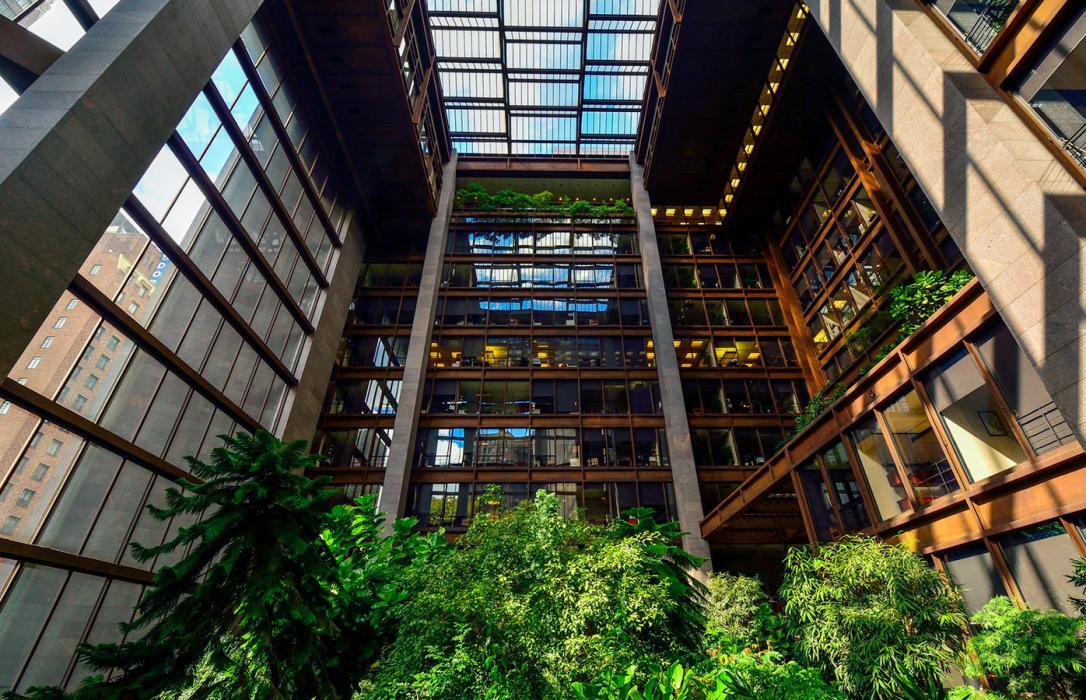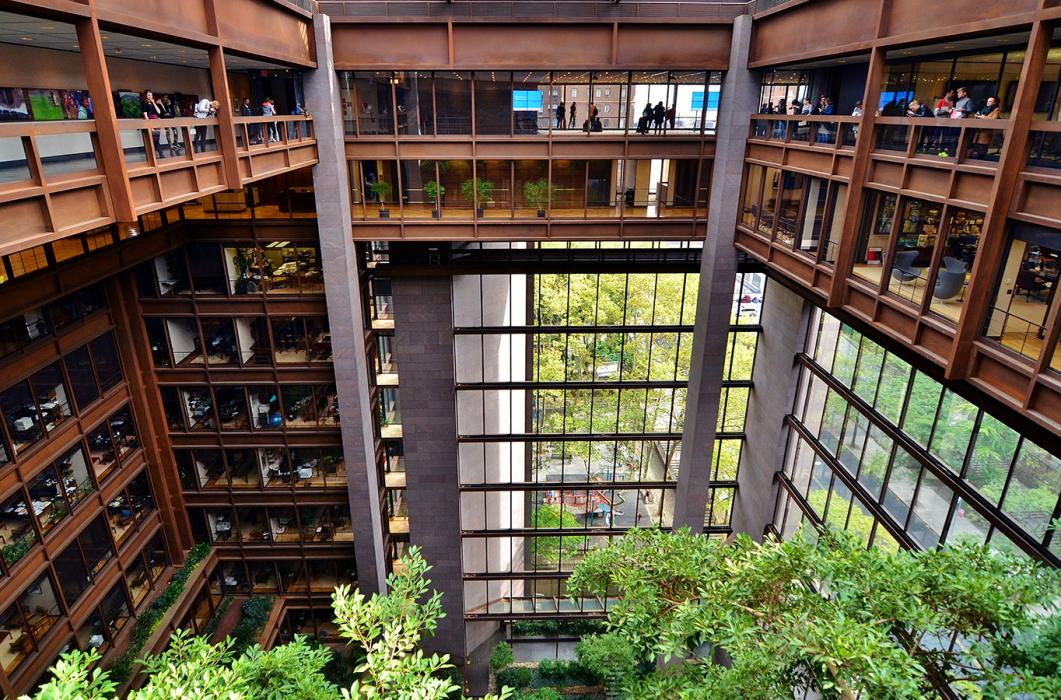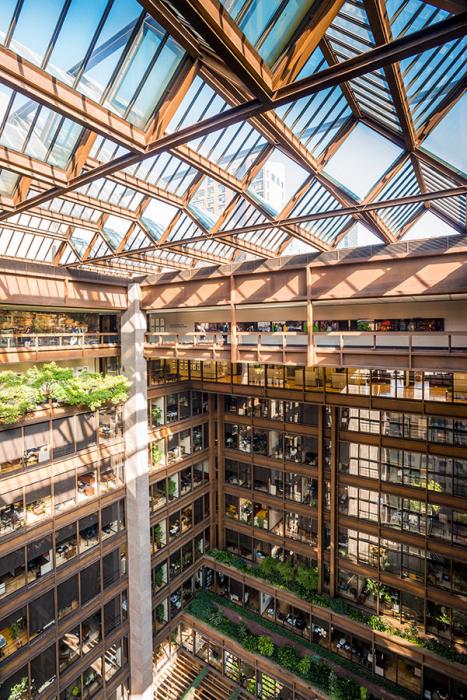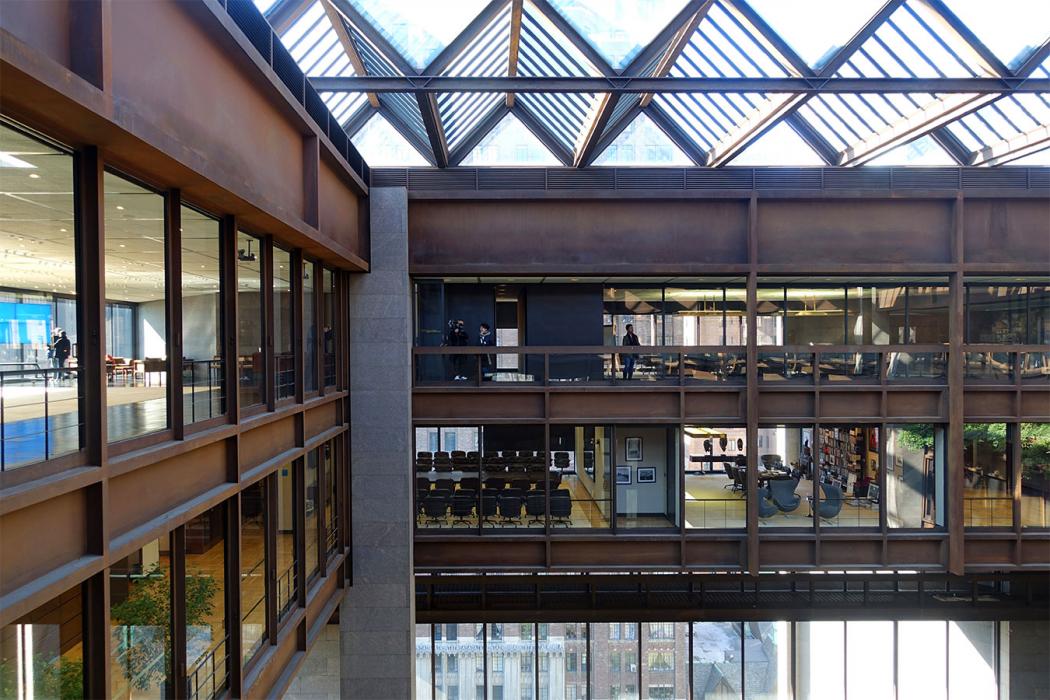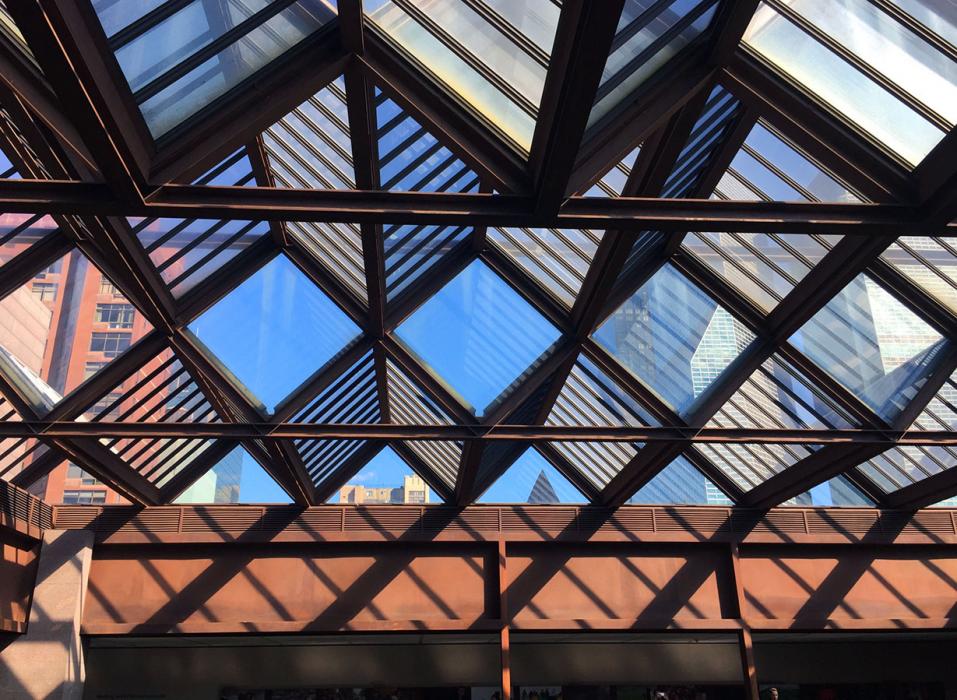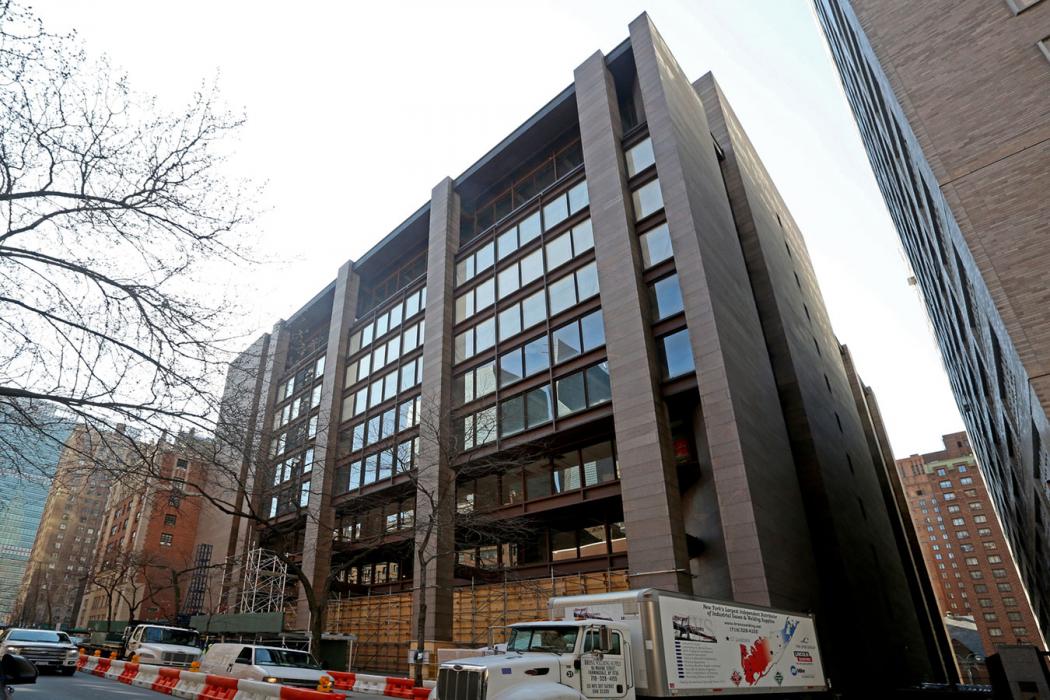Ford Foundation Center for Social Justice
When renovating an architectural icon, making the right choices to preserve its historical significance is essential.
Project Details
AIA, COTE Top Ten Awards, 2020
AIA, Award – Interior Architecture, 2020
The Architect's Newspaper, Best of Design Awards: Building Renovation — Commercial, 2019
New York Landmarks Conservancy, 29th Lucy G. Moses Preservation Award, 2019
The Society of American Registered Architects, SARA NY Award for Historic Preservation & Restoration, 2019
The Challenge
The design of the Ford Foundation building, completed in 1967, was unprecedented. The architects, Kevin Roche John Dinkerloo and Associates, brought the outside in by creating an atrium garden.
The Ford Foundation saw an opportunity to reposition the landmark building and expand the facility’s function. Led by Gensler, we collaborated with the entire project team to transform the building to reflect the Foundation’s current mission to promote social justice and to preserve the building’s architectural legacy.
To achieve the Foundation's vision, we brought in several multidisciplinary teams - including building envelope, structural design, façade restoration, structural renewal, historic preservation, roofing design and plaza waterproofing - for this important renovation to a New York City Landmark.
Here's How
Maintaining the Building’s Historic Value
Our solutions for the building envelope repairs considered the theory of minimal intervention and used comparable materials to retain the authenticity of the structure. We specified treatments of the South Dakota granite cladding and the Cor-Ten steel curtain wall, and the re-glazing of the main skylight. We also designed the waterproofing system at the main roof, terraces, planters, interior atrium and plaza.
By researching façade systems that fitted in the Cor-Ten steel frames, we minimized the visual impact of the repairs. We restored the historic copper skylight in place and installed efficient glazing units with a similar look of the original. The loggia area at the ground level got new glazing. We detailed the new power-operated windows that act as smoke ventilators and connect to the fire alarm system.
Our structural work included infrastructure upgrades, reinforcement of floor framing at new assembly areas, slab openings at new stairs and double-height spaces and coordination of existing framing with the new infrastructure upgrades. We also developed and designed new architectural features that required rigging analysis for the incorporation of approximately 40 new trees into the indoor atrium space.
Restore and Reuse
Our design of the plaza renovation retained its authenticity while improving durability and accessibility. We used custom-made pavers comparable to the existing pavers to preserve the historic features and character. We saved most of the old pavers and reused them in the interior atrium to symbolize preservation and the passage of time. The selected high-performance waterproofing system resolved the leak issues under the plaza.
 Timothy Vollmer/Flickr
Timothy Vollmer/Flickr
Results
The building reopened in December 2018 and represents the success of the entire team’s efforts to meet the Foundation’s goal of creating a space that exemplifies openness, accessibility, sustainability and collaboration.
We contributed to the synergy by sharing the skills and knowledge of preservation technology methods, systems and materials. This has allowed the Foundation to expand its facilities and make them accessible for all, expressing the principles of the Ford Foundation Center for Social Justice through its transformed headquarters.


